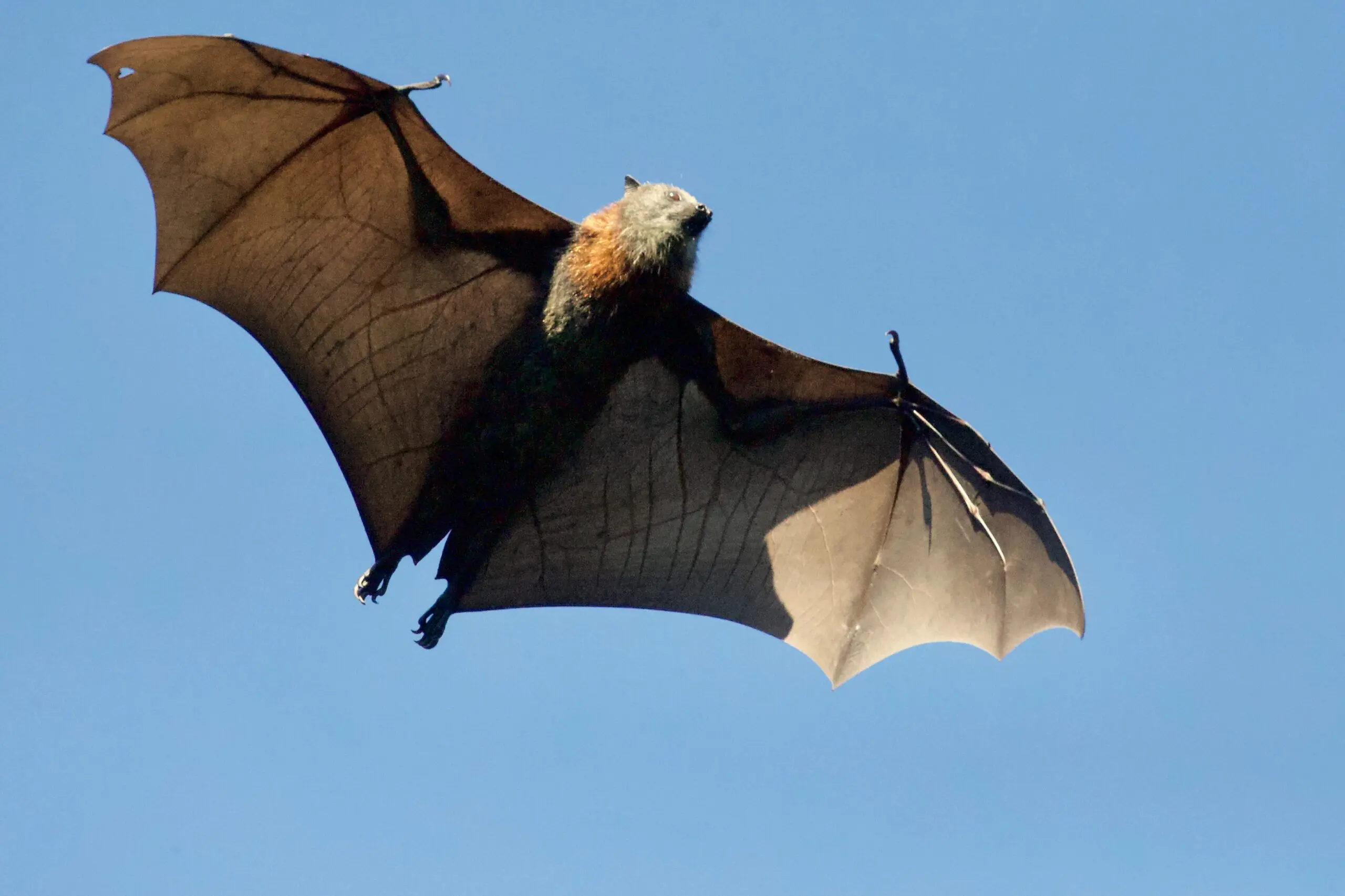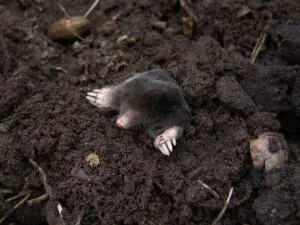

We all know bats as the Halloween mascot that can be seen flitting about in the evenings, but in reality, there is much more to them than that. Read on to learn just how unique bats really are.
1. There are thousands of bat species
To be more precise, there are over 1,400 species. Incredibly, bats can be found on every continent except for Antarctica! Bats range dramatically in size from one species to the next. The Kitti’s hog-nosed bat, also known as the bumblebee bat, weighs less than half of a penny and only grows to about 1.1 to 1.3 inches long. It is the smallest species of bat as well as one of the smallest mammals in the world. On the other end of the spectrum is the flying fox bat, which has a wingspan of up to 6 feet!
2. Bats are the only mammals that can fly
You may be wondering “what about flying squirrels?” Well technically, flying squirrels can’t actually fly- they glide through the air for short distances. Bats on the other hand can truly fly, and pretty quickly too. Bats can fly at speeds of more than 60 mph. One species, the Mexican free-tailed bat, can even fly up to 100 mph! They are the fastest mammals in the world by a longshot.
3. Some bats hibernate, some migrate, and some do both
Bats are well-known hibernators, but did you know that they are also prolific migrators? During the time that certain bats are settling into their local winter homes, others are migrating. Some species migrate to a warmer climate to avoid hibernating all together. Others migrate to a new location for hibernating.
4. Bats are pollinators
In fact, there are hundreds of types of fruits and plants that depend on bats for their pollination. Without bats, we would no longer have agave, avocados, bananas, mangoes, or saguaro cacti, just to name a few. Bats also spread the seeds of foods like cacao, figs, and nuts.
5. Bats are great for pest control
Beyond being responsible for the survival of hundreds of fruits through pollination, bats also defend crops through their eating habits. Bats typically eat their body weight in bugs each night, with some species eating as many as 6,000 in an hour! Some people even build bat houses to keep the insect populations in check in their yards and gardens.
6. Some bats drink blood
It’s true! The aptly named vampire bats do in fact drink blood, usually from sleeping animals like cows, horses, pigs, and birds. They make small cuts in their victims with their sharp teeth, and then use their tongues to lap up the blood. Their saliva contains an anticoagulant, so the blood does not clot and continues to flow. They can feed for as long as 30 minutes without waking their host up, and the feeding does not hurt the host. Vampire bats hunt by sensing the sound of their prey’s breathing. They can memorize the sound and return to the same host night after night.
7. Bats are important to medicine
Believe it or not, bats play a rather significant role in modern medicine. By studying the anticoagulant in the saliva of vampire bats, scientists have been able to develop drugs to combat both cardiovascular disease and arteriosclerosis. Studying bats’ use of echolocation has helped researchers develop better navigational aids for the blind. Advances in vaccines have also been achieved due to research done on bats. What’s more, there are around 80 medicines that are made from plants that rely completely on bats for their survival.
8. Bats are designed to hang upside down
Everything about a bat’s anatomy is ideal for hanging upside down. They are equipped with one-way valves to prevent their blood from pooling in their heads. What’s more, their claws allow them to hang without actually having to use any energy to hold on. Believe it or not, bats’ talons relax into a closed position and tighten around the perch based on the bat’s body weight pulling downward. So, in order to hang onto something, they simply have to open their claws, place them around their perch, and the gravity does the rest of the work. Bats hang upside down for a couple of reasons, but mainly because predators cannot easily reach them when they are hanging on the ceiling. In addition, there are virtually no other animals competing for ceiling real estate. Bats also need to drop from high up in order to start flying, as they cannot run or jump to get liftoff.
9. Bats are not “blind as a bat”
That’s right! Contrary to the popular saying, bats can actually see just fine. They gained the reputation of being blind because most species use echolocation to hunt and navigate; not their vision like other mammals. A bat’s echolocation is so advanced that it actually allows the bat to pinpoint an object’s distance, location, size, and movement if any.
10. Disease is a bat’s biggest threat
Of the 40 species of bats in the United States, 10 species are endangered, 2 are threatened and even more than that are on a severe decline population-wise. This is mainly due to disease. Of course, bats have natural predators such as hawks, owls and snakes, but the effect of these predators on bat populations is small compared to the effect of disease. Perhaps the biggest threat to bats is white-nose syndrome, which is a fungal disease that affects hibernating bats. The disease has killed more than 90% of the populations of little brown bats, northern long-eared bats, and tri-colored bats in under 10 years. It is named for the fungus that grows around the muzzle and wings.
How can we help bats?
It is important that we do our part to slow the spread of diseases like white-nose syndrome. Try to avoid areas where bats might be hibernating, and if you do visit such an area, decontaminate your clothes, shoes, and gear before entering the area. Bats are also suffering loss of habitat, making bat houses a great way to help out your local population. Together, we can work towards taking bats off of the endangered list altogether, one step at a time.






